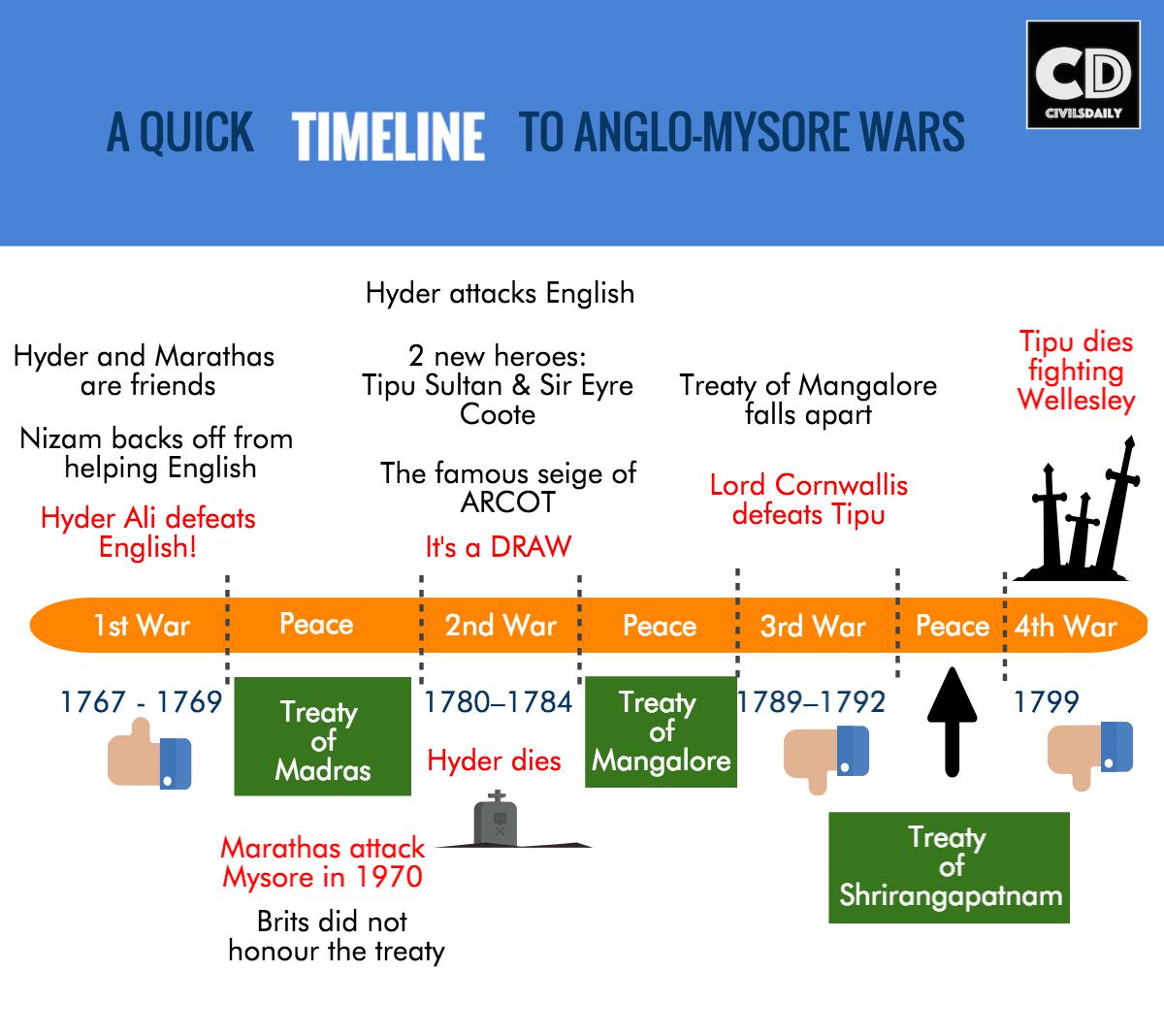Why in the News?
The new NCERT Class 8 Social Science textbook omits Tipu Sultan, Haidar Ali, and the Anglo-Mysore Wars from its chapter on India’s colonial era.

Legend of Tipu Sultan and Haidar Ali:
- Rise of Haidar Ali: Started as a horseman in the Mysore army and became de facto ruler by 1761 through military skill.
- Military Reforms: Introduced Western training, built arms factories with French help, and strengthened cavalry and artillery.
- Tipu Sultan: Born in 1751, trained by French officers and well-versed in Islamic law, Persian, Arabic, and science.
- Administrative Innovations: Introduced a new calendar, land revenue reforms, and coins in gold, silver, and copper with Persian inscriptions.
- Governance and Industry: Created seven departments, promoted silk industry, and envisioned the future Kannambadi Dam.
- French Alliance: Maintained strong ties with France, alarming the British amid global Anglo-French rivalry.
- Technological Advancement: Deployed iron-cased Mysorean rockets, which inspired British Congreve rockets.
- Moral Governance: Banned liquor, gambling, and prostitution to enforce discipline.
- Religious Policy: Though devoutly Islamic, he patronized temples and mathas, but faced criticism for intolerance in annexed regions.
About the Anglo-Mysore Wars:
First Anglo-Mysore War (1767–69)
- Alliance Against Mysore: British, Marathas, and Nizam formed a coalition against Haidar Ali.
- Diplomatic Victory: Haidar neutralized the Marathas and secured Nizam’s support.
- Outcome: Treaty of Madras (1769) restored the status quo and mutual restitution of territories.
Second Anglo-Mysore War (1780–84)
- Trigger: British violation of the Treaty of Madras and occupation of French port Mahe.
- Coalition Formation: Haidar allied with Marathas and Nizam against the British.
- Major Battle: Captured Arcot and defeated Col. Baillie; Haidar died in 1782.
- Conclusion: Tipu continued the fight; Treaty of Mangalore (1784) was the last time an Indian power dictated terms to the British.
Third Anglo-Mysore War (1790–92)
- Cause: Tipu’s attack on Travancore, a British ally.
- British Response: Cornwallis led a coordinated campaign with Maratha and Nizam support.
- Result: Tipu ceded half his territory and paid ₹3 crore under the Treaty of Seringapatam (1792).
Fourth Anglo-Mysore War (1799)
- British Strategy: Wellesley isolated Tipu diplomatically over his French ties.
- Final Battle: Tipu was killed defending Seringapatam on May 4, 1799, ending native resistance in South India.
Aftermath of the Wars:
- Fall of Resistance: Tipu’s death marked the end of organized native military opposition in the South.
- British Control: Wodeyars reinstated as puppet rulers under Subsidiary Alliance; key territories annexed by the British.
- Territorial Division: Nizam received Gooty and Gurramkonda; Marathas declined British land offer.
- Administrative Changes: Mysore came under direct British rule in 1831 due to alleged misrule; restored to Wodeyars in 1881 by Lord Ripon under a constitutional monarchy.
- Legacy: Anglo-Mysore Wars showed how native resistance could challenge colonial power through modernization, alliances, and tactical innovation.
- Rocketry Influence: Tipu’s military rocketry was studied and adapted by the British into European warfare.
| [UPSC 2014] With reference to the Anglo-Mysore Wars, consider the following statements:
1. In the Third Battle of Panipat, Ahmed Shah Abdali defeated Ibrahim Lodi. 2. Tipu Sultan was killed in the Third Anglo-Mysore War. 3. Mir Jafar entered in a conspiracy with the English for the defeat of Nawab Siraj-ud-daulah in the Battle of Plassey. Which of the statements given above is/are correct? (a) 1, 2 and 3 (b) 3 only* (c) 2 and 3 (d) None |
Get an IAS/IPS ranker as your 1: 1 personal mentor for UPSC 2024

